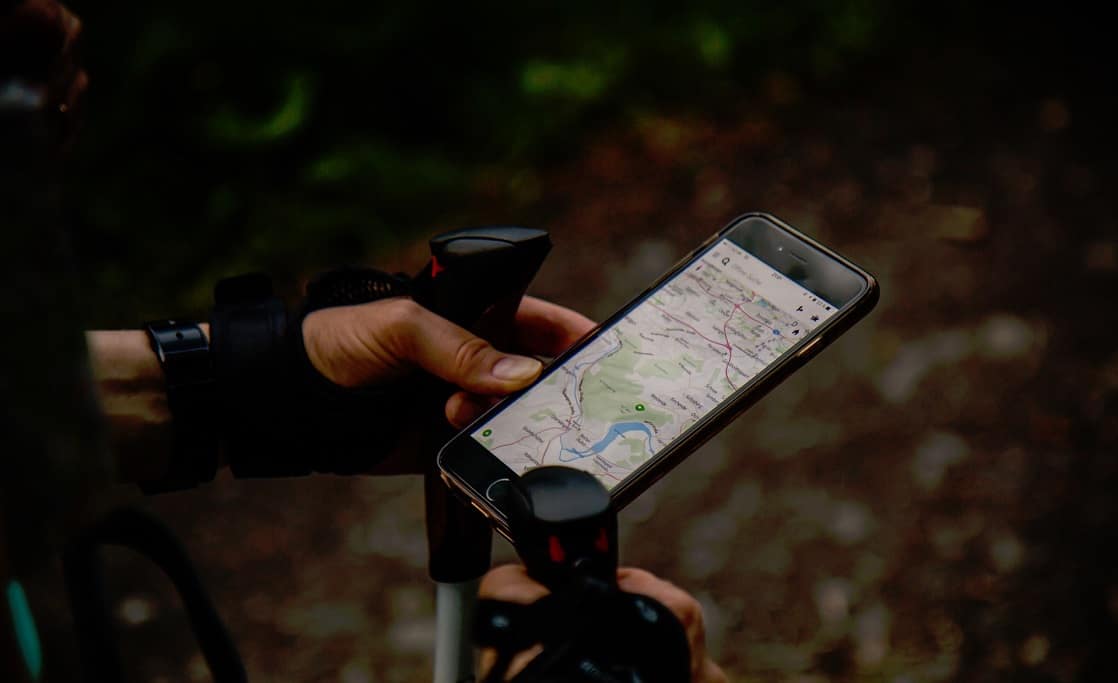Hiking without a GPS is exciting and a bad-boy moves until you’ve found yourself standing in the middle of nowhere with 30 minutes of sunlight left and no idea where you are. It can be fun, but it is not smart. That’s why you need some sort of satellite navigation on your adventures!
There are three main options – a smartphone, a handheld GPS device, and a survival watch. We’ll tell you the pros and cons of each one below. This way, you’ll easily figure out which GPS option is the best for you and your needs!
GPS On Your Smartphone
The most convenient GPS option for your next hike is likely in your hands right now–your smartphone. Even when cell towers are nowhere to be found, your phone is still receiving signals from all those satellites in the orbit. And it can do it better than a handheld GPS since your phone likely has access to more satellites!
How is that possible? Handheld GPS devices have access to specific satellites, usually GPS and/or GLONASS. Some will also have access to Galileo, but it’s not a given. Your phone easily has access to all three satellite types and, depending on which country you’re in, you might even be able to get signals from China’s BDS satellites.
Another advantage of smartphones is access to apps. There’s a lot of different hiking apps out there, most of which have topographical maps, trail markers, and will record your hike. You can see which trails people are recommending and get live updates on a trail’s condition, which is certainly useful!
The only downside to using your smartphone as a dedicated GPS device is that you have to pay attention to its battery life. A good power bank is recommended if you don’t want to run out of juice and GPS–in the middle of nowhere.
Handheld GPS
Handheld GPS devices are great alternatives to smartphones. They are specifically designed for navigation, so they have more navigation features than your phone. This includes topographical maps, satellite imagery, barometer, compass, altimeter, and a variety of other features.
Additionally, these devices are usually water and shock-resistant, and they have huge batteries. The advantage of a handheld GPS device over your smartphone is that you can drop it, submerge it in water, and use it without any issues in freezing cold weather. The average battery life of these devices is 15-20 hours of use, which is about twice as much as a smartphone. Also, some of these handheld devices use AA batteries, so it’s super easy to just double that battery life.
But smartphones do have one advantage over handheld GPS devices–emergency contact use. In case you don’t make it home in time, some hiking apps let you set up your phone to send an emergency text message to a number you choose.
Nevertheless, the “LifeLine” feature is integrated into some select handheld GPS devices, but most of them don’t have anything similar.
Outdoor Watches With GPS
Great outdoor watches are another option you should consider. They might not have as many features as smartphones and handheld GPS devices, but they are by far the most convenient option. Also, most GPS watches have an amazing battery life of 20+ days!
A GPS watch is waterproof and shock-resistant, so you can use it in any weather. They do lack proper mapping features, but they easily make up for that with other things like heart rate monitors, waypoint tracking, built-in altimeters, and compass.
On top of that, some of the GPS watches have the option of solar charging for ultimate battery life. This is extremely useful for hiking and backpacking, especially if you’re no stranger to multi-day expeditions.
However, it’s worth noting that most of those features are exclusive to smartwatches. You can still get decent analog survival watches with features like a compass and a barometer, but don’t expect them to have satellite access or waypoint tracking.
